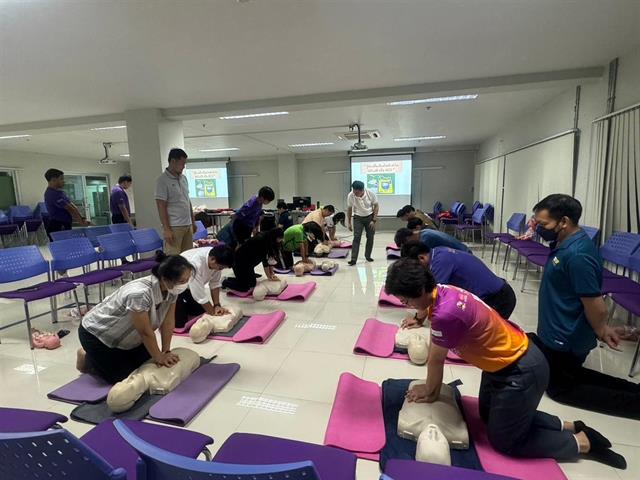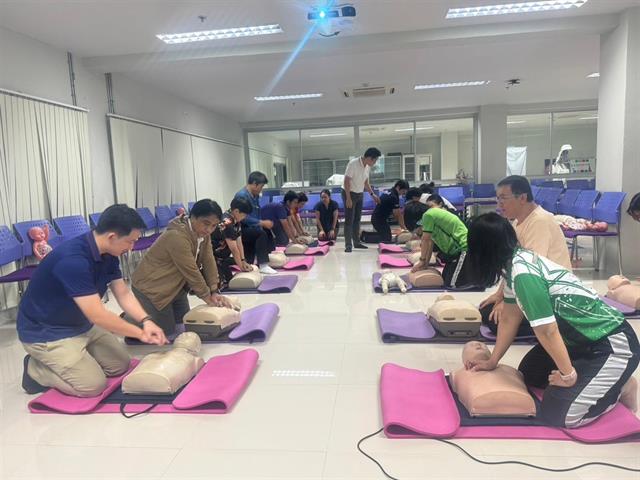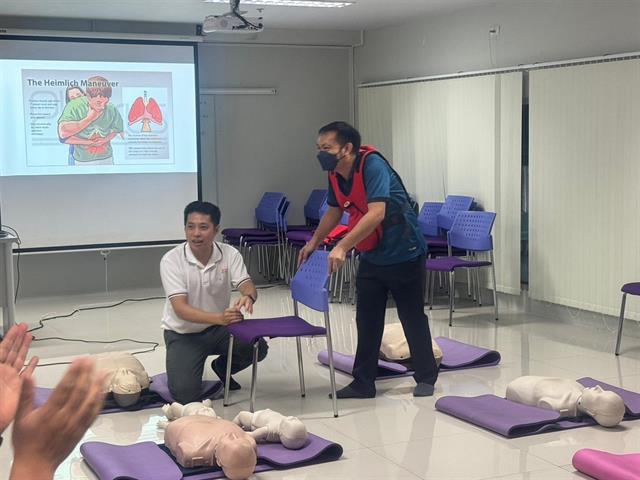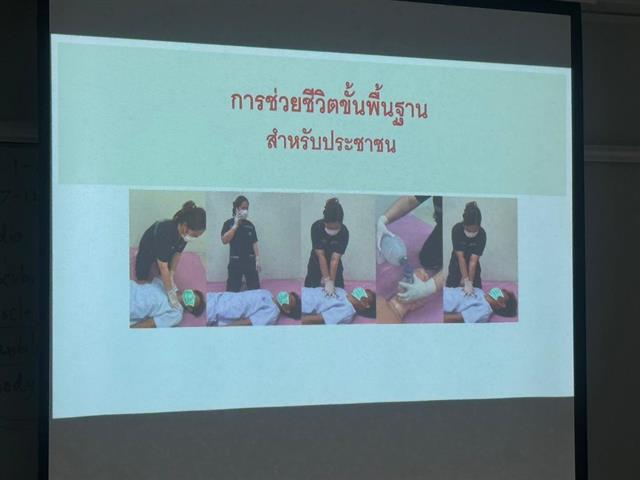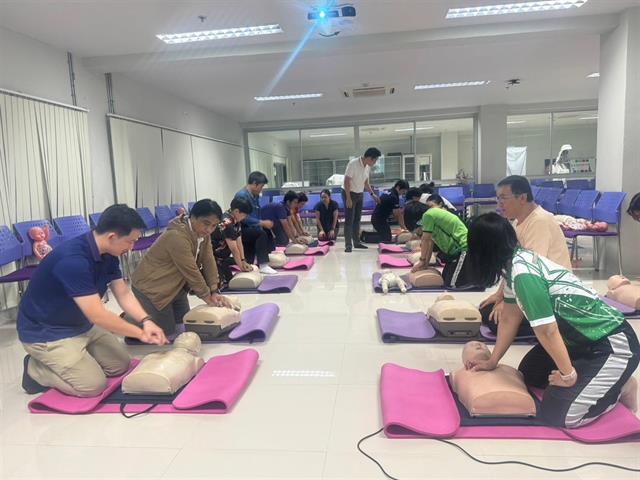.jpg)
The training on Cardiopulmonary Resuscitation (CPR) and the use of Automated External Defibrillators (AED) aimed to enhance knowledge and skills in basic life support (CPR), build confidence in performing CPR, and using AED. The event was organized to promote safety and adherence to standard guidelines in preparing for emergency responses. This helps reduce the death rate from cardiac arrest and lowers the risk of brain and internal organ damage caused by prolonged oxygen deprivation.
On September 6th, 2024, the School of Science at the University of Phayao, under the leadership of Associate Professor Dr. Sittisak Pinmongkhonkul, Dean of the School of Science, and with the participation of faculty staff, held a CPR and AED training. The training was conducted by Dr. Udomsak Tangchaisuriya, a lecturer in the Department of Emergency Medicine at the Faculty of Medicine, Chiang Mai University. The event took place in the Exercise and Sports Science Laboratory, located in the Sanguansermsri Building at the University of Phayao.
Cardiopulmonary Resuscitation (CPR) is a technique used to restore heart function and breathing in patients. It involves performing chest compressions, rescue breathing, and using an automated external defibrillator (AED). These techniques are crucial in increasing a patient’s chance of survival. To ensure that these life-saving actions are performed effectively, it is important to adhere to medical standards set by organizations such as the American Heart Association (AHA) or the European Resuscitation Council (ERC). Following these standards ensures that life-saving procedures are carried out accurately and safely. Proper and standard-compliant CPR not only increases survival chances, but also reduces the risk of oxygen deprivation and promotes community safety. Training in CPR not only enhances life-saving skills, but also boosts confidence in responding to unexpected incidents. Therefore, such training is crucial for preparing individuals to effectively respond in daily life.
